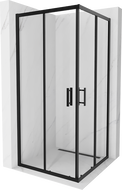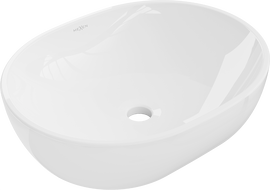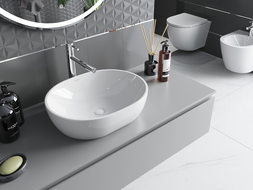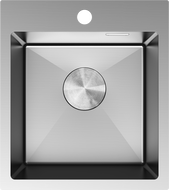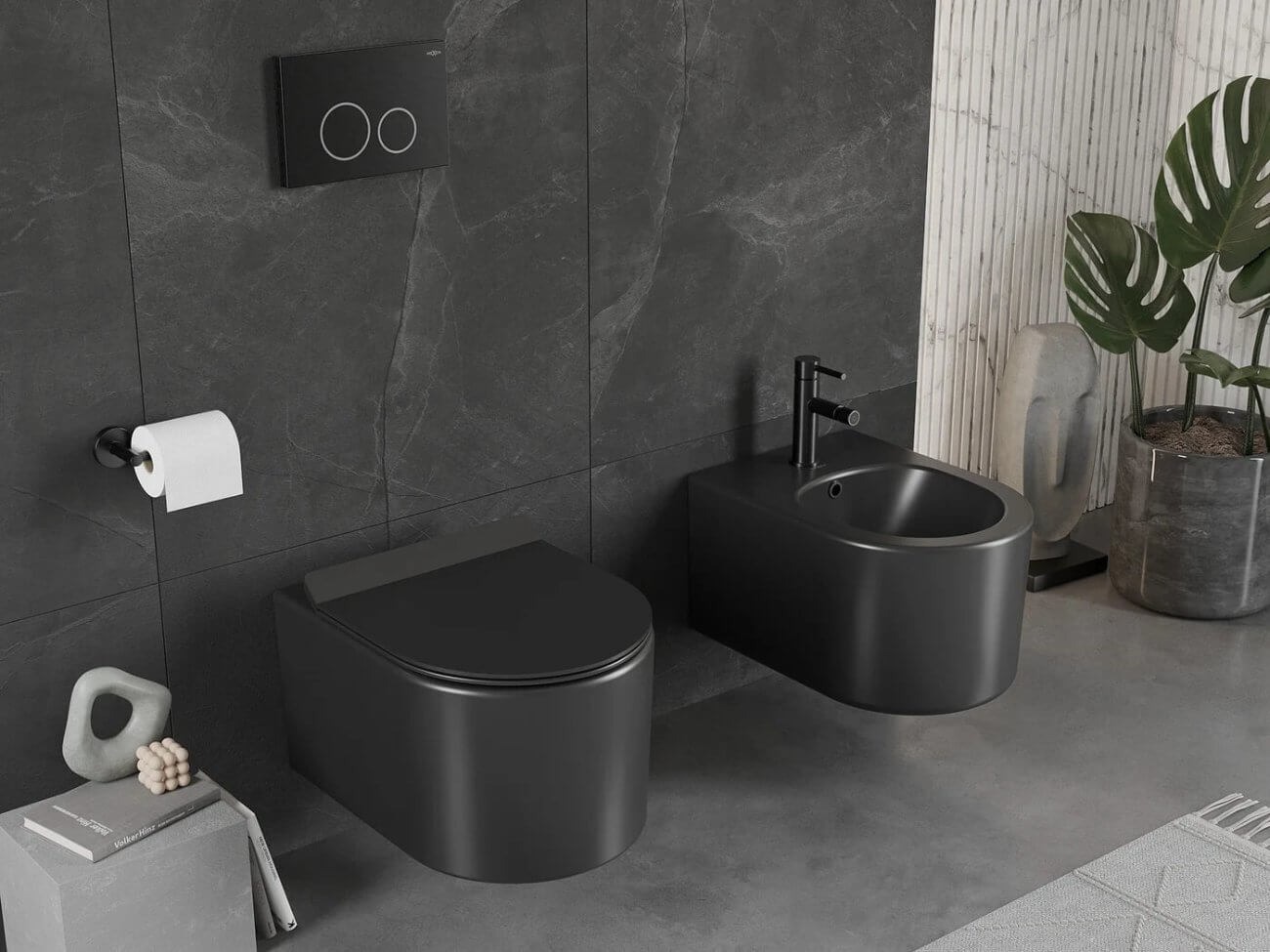
Searching for the ideal toilet composite can be exhausting, especially considering the variety of models and features available on the market. In this guide, we will help you understand what characteristics should define the perfect toilet bowl. We will explore different types of toilet bowls, examine their functionality, and analyze their aesthetic aspects as well as ease of maintenance. Read on to find out which option will be best for your bathroom.
What is a toilet composite and why should you choose it?
A toilet composite is a popular bathroom fixture that is favored for its functionality and aesthetic appeal. It combines a toilet bowl and a water tank in one compact design. Such toilets work perfectly in any bathroom, whether large or small. When choosing the right type, it is important to pay attention to several key factors, such as the type of drainage, mounting methods, and additional features.
Types of toilets – which one to choose?
Various types of bowls are available on the market, which can be categorized based on pipe appearance, i.e., the flushing system. These include:
- Model with horizontal drainage: this system is also known as Poznań drainage. It is one of the most commonly chosen options. It is favored for its horizontal drainage, allowing water to flow directly to the installation placed in the wall behind the toilet. This solution is particularly popular in modern bathrooms.
- Toilet bowls with vertical drainage: also known as toilets with Warsaw drainage. This is a traditional solution where water is drained vertically to the floor. Such systems are designed for older buildings where the sewage system does not allow for horizontal drainage.
- Corner toilet composites: this special type works perfectly in small spaces. The corner option saves space as it is installed in the corner of the room, thus expanding the usable area of the bathroom.
Toilet bowls – what you need to know about them?
When selecting a bowl, it is essential to pay attention to how it is mounted. A floor-standing toilet is known for its straightforward installation, making it an excellent choice for those who are remodeling their bathroom independently. It is also crucial to determine the location of the tank and where the flush button will be placed. This is extremely important if a wall-hung bowl has been purchased and a frame is to be installed. The drainage system through which the water flows is also significant.
Aesthetics are important too! Discover the most common types of bowls!
Of course, aesthetics matter. Modern toilet bowls are available in various styles and colors. This makes it easy to match them to the decor of your bathing area. There are very practical rimless bowls, as well as traditional models with a rim. There are also options equipped with various additional features, such as a slow-closing seat, water-saving systems, and special antibacterial coatings. These additional options significantly enhance toilet comfort and hygiene.
How to choose the right toilet composite for your bathroom?
Before purchasing the right toilet composite, it is vital to accurately measure the space where it will be placed. Therefore, the size of the installation space and the size of the drainage are important. In small bathrooms, corner toilet composites work well, taking up less space and visually enlarging the area, along with a toilet bowl with horizontal drainage, which is easier to install.
When choosing ceramics, it is also crucial to consider the width and depth of the bowl, as these parameters influence its functionality. It should be well-suited to the size of the room and the needs of all users.
Different types of bowls – what is worth knowing?
Comfortable ceramics are the most important element of any bathroom. Therefore, manufacturers like Mexen offer various types. We categorize them into several basic types:
- Free-standing bowls: these traditional toilets are mounted directly on the floor and are the most frequently chosen by Poles. This type of solution is easy to install and available in various shapes and sizes.
- Hanging bowls: wall-hung toilets are still a relatively new feature that is gaining popularity year after year. Mounted on the wall, they create an impression of lightness and elegance while facilitating floor cleaning. This is an excellent choice for minimalism lovers.
- Rimless toilet bowls: characterized by high user comfort, as they lack the traditional rim where bacteria and dirt often gather. Therefore, they are considered more hygienic and practical, as maintaining cleanliness in the bathroom is easier.
Aesthetics and functionality of toilet composites – how to combine them?
When selecting toilet composites, it is essential to harmoniously combine aesthetics with functionality. There are various styles and finishes available on the market, allowing for the perfect match of toilet appearance to any interior.
Modern toilet bowls come in many interesting versions. From classic ones – such as elegant models characterized by simple yet elegant lines, with subtle curves and minimalist details – to variants with geometric lines and subtle designs. For fans of minimalist designs, bowls in shades of pure white, black, and gray are available.
If you prefer elegance, you can choose among toilet composites with delicate, chrome accents or muted shades of beige and brown, which add class to the interior. Alternatively, in modern bathrooms, rectangular toilets with high gloss present beautifully.
What toilet bowl? – discover the additional benefits of modern toilets
If you need to decide which toilet composite to choose, know that you should also consider the material from which it is made. Modern sanitary ceramics offer various types of toilet bowls that boast high durability and scratch resistance. Additionally, innovative technologies used in their production, such as antibacterial coatings, provide extra benefits, namely ease of cleaning and better hygiene.
Modern toilet composites can also have built-in self-cleaning systems and functions that reduce the number of flushes. When choosing a bowl, it is worth getting acquainted with their appearance and functionality to create a harmonious and comfortable bathroom space.
What additional functions can toilet composites have?
Toilets are no longer just basic bathroom fixtures. Modern sanitary equipment can offer much more than traditional functions. From intelligent water-saving systems to convenient solutions that ensure comfort of use. Discover their advantages!
- Dual flush system: this is an interesting method that allows you to select the amount of water used for flushing. Standard systems offer two levels: a smaller one, usually 3 liters, and a larger one, which is 6 liters. This way, you can significantly reduce your water consumption, which undoubtedly translates to financial savings.
- Antibacterial coating: in our offer, you can find models covered with a special antimicrobial layer. This reduces the risk of bacteria developing on ceramic surfaces. Such a finish provides a higher level of hygiene and facilitates toilet cleaning. As a result, the toilet bowl is less prone to dirt build-up, and cleaning it is considerably quicker and easier.
- Slow-closing seat: it eliminates the problem of loud slamming when closing. A well-designed mechanism ensures gentle and quiet closing of the seat, which is particularly useful in homes with small children and in bathrooms that are part of bedrooms. The slow-closing seat is not just convenient, but it also protects the toilet from mechanical damage.
How to adapt the toilet to the specifics of the room?
When selecting the right toilet bowl, it is worth considering the specifics of the bathroom in which it will be installed. Different layouts of rooms and available space may require adjustments to the model to best utilize the free space.
Small bathrooms and separate toilets pose many challenges in selecting ceramics. Therefore, corner composites or variants with a narrow water tank are often recommended for these spaces, providing more freedom of movement in the bathroom and giving the room a modern look. It is worth knowing that the compact size, or slim, means it is slender and can be mounted closer to the wall.
In larger bathrooms, where space is not a limitation, you can afford more elaborate solutions. Hanging bowls, installed on a frame, present themselves very elegantly and facilitate cleaning.
Tips for installing a toilet bowl in your bathroom
Installing a toilet is relatively simple, but it requires adhering to a few rules. Here are some tips that may help you during installation:
- Match the drainage – pay attention to the type of drainage in your bathroom. If the sewage installation is already done, for example, equipped with vertical piping, it is advisable to choose a variant with the same type of pipe to avoid costly modifications and cutting into the floor. Otherwise, buy a toilet with vertical drainage.
- Maintain proper distances – during renovation work, it is essential to ensure the proper distance from the wall and other bathroom elements. The standard distance is about 60-70 cm, which ensures freedom of movement.
- Stability of installation – remember, the toilet should be installed on a stable base. In the case of wall-hung bowls, mounted on a construction frame, ensure it is properly secured to the wall and can withstand the weight of all users.
- Accurate sealing – obviously, a crucial part of proper bowl installation is the accurate sealing of all connections. This will thus prevent sudden water leaks. Pay attention to the connection between the toilet and the drainage as well as between the water tank and the bowl to ensure that the installation has been carried out correctly.

